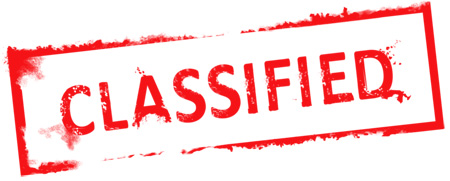In my piece last night about the FBI report on Hillary Clinton’s email, I didn’t spend much time on minutiae about the number and type of classified emails that were found on Hillary’s server. We’ve been through all that, and the report  didn’t have anything new to add on the subject. But I did say this:
didn’t have anything new to add on the subject. But I did say this:
Most people the FBI talked to used private email accounts all the time; did their best to keep classified information out of these channels; and didn’t believe that any of the emails they sent included classified information. Other classification authorities have disagreed, as we all know by now, and the entire discussion gives you a taste of how subjective the classification process is. Basically, we have lots of experienced people who disagree about whether various things really ought to be classified.
I got a bit of pushback on this that boiled down to: “Classified is classified. It doesn’t matter if you disagree. There are strict rules about how you can handle sensitive information, and you have to follow them whether you like it or not.”
True enough. But this only applies to documents that are marked classified at the time they’re sent. In this case we’re talking about documents created by folks at State that hadn’t been classified yet. This doesn’t let the originators off the hook: they’re supposed to know whether anything in their email is sensitive and take appropriate precautions. But it’s still a judgment call, and it’s quite possible that ten people will have ten different opinions.
In this case, the originators all believed they were phrasing things in such a way that they were safe to send over an unclassified email account. Years later, classification authorities disagreed in a number of cases. So who’s right? There’s no way for the public to know. We just know that a lot of high-level State employees made judgments that were apparently uncontroversial at the time but were eventually overruled by classification authorities.
Of course, this doesn’t include the three emails that were marked classified in the body of the email. Here’s what the FBI report had to say about those:
The emails contained no additional markings, such as a header or footer, indicating they were classified. State confirmed through the FOIA review process that one of these three e-mail chains contains information which is currently classified at the CONFIDENTIAL level. State determined that the other two e-mail chains are currently UNCLASSIFIED.
So two of them aren’t classified at all and shouldn’t have been in the first place, while the third is obviously something trivial (“Confidential” is the lowest possible level of classification). If that’s your case against Hillary—one trivial email over four years that shouldn’t have been sent—then go to town with it. The rest of us will spend our time on stuff that matters.
For more on this, see Fred Kaplan for an overview and Kurt Eichenwald for a deeper discussion of how classified information is handled.

















